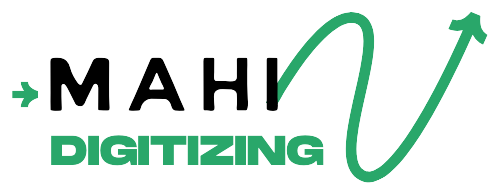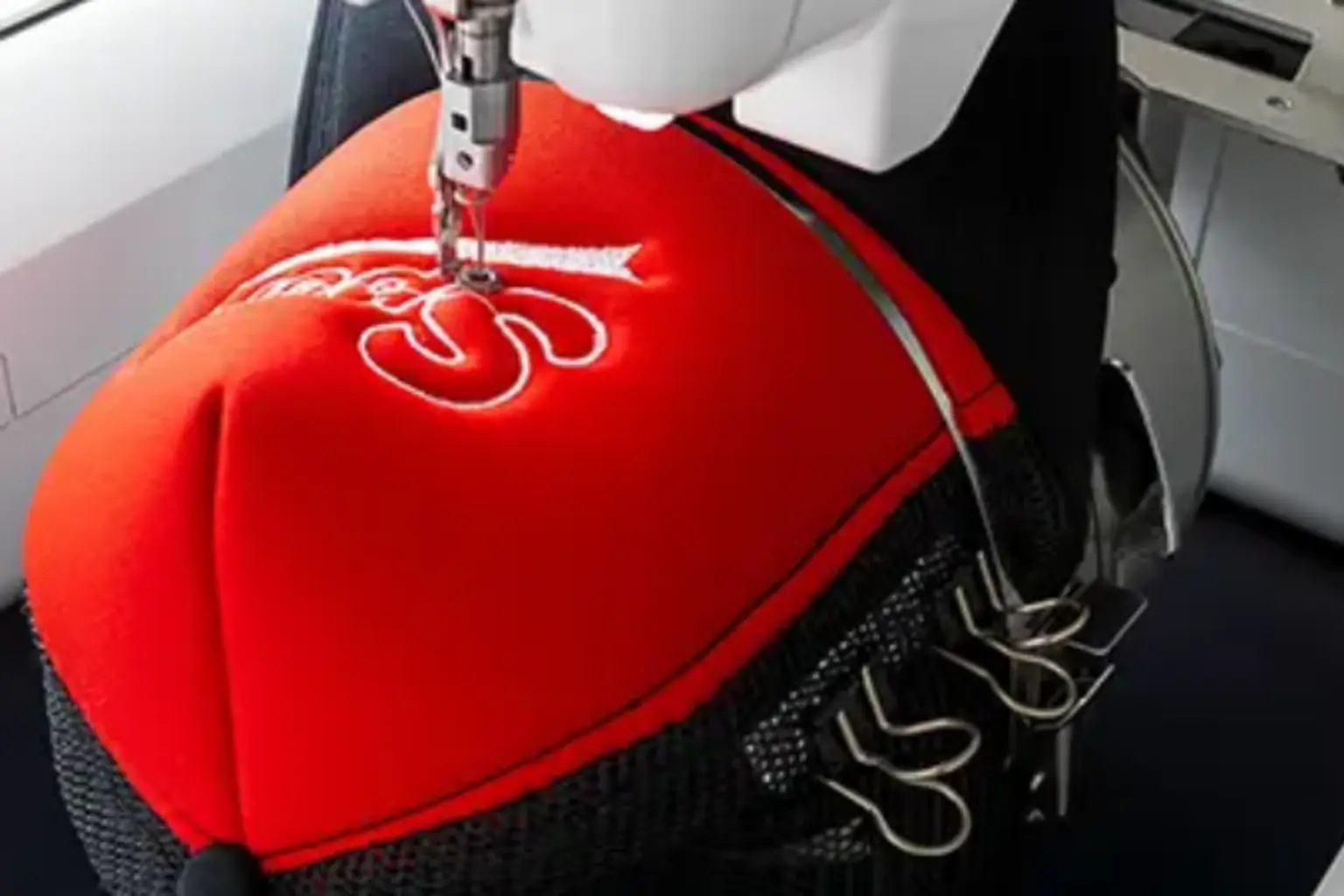Lettering is one of the most common yet challenging aspects of embroidery digitizing. Unlike larger graphics, small letters demand exceptional precision to remain legible and visually appealing. Among the key elements that influence lettering quality are stitch angle and pathing. These two factors determine not only how text looks on fabric but also how efficiently it runs on embroidery machines. In this article, we’ll explore why stitch angle and pathing are critical in lettering digitizing and how they impact professional embroidery results.
Understanding Stitch Angle in Lettering Digitizing
Stitch angle refers to the direction in which stitches are laid down during embroidery. For lettering, this directly affects how smooth, sharp, and readable the text appears.
When stitch angles are applied correctly, they enhance the natural flow of letters, creating consistent coverage and a polished look. Incorrect angles, however, may cause distortion, gapping, or uneven thread tension.
For curved letters like “O” or “C,” changing the stitch angle along the curve ensures smoother edges. Without angle variation, letters can appear blocky or jagged.
Stitch angles also play a role in how light reflects off thread. Proper angles give text a dynamic appearance, making it stand out against the background fabric.
Dense fonts require careful angle adjustments to prevent thread buildup, which can make small letters unreadable. Adjusting angles reduces thickness while maintaining clarity.
Thin or script-style fonts benefit from angled stitches that follow the natural direction of strokes, ensuring a handwritten look is preserved in thread form.
Digitizers must test stitch angles on different fabrics since the same settings may behave differently depending on fabric weave and texture.
At Mahi Digitizing, our experts carefully control stitch angles to ensure lettering remains crisp, legible, and aesthetically pleasing across all fabric types.
The Role of Pathing in Lettering Digitizing
Pathing refers to the order and direction in which stitches are executed. In lettering digitizing, pathing determines efficiency, accuracy, and machine performance.
Correct pathing ensures that letters are embroidered in a logical sequence, reducing unnecessary jumps or trims. This improves machine speed and lowers production costs.
Poorly planned pathing can lead to excessive thread trims, increasing machine downtime and the risk of thread breaks during production.
Pathing also influences registration, especially when multiple colors are used. Incorrect pathing may cause misalignment, making text appear messy or overlapping.
In small lettering, precise pathing prevents fabric distortion by minimizing tension imbalances that occur when stitches pull unevenly.
Efficient pathing reduces wear on embroidery machines, extending their lifespan while improving output quality.
Advanced digitizers use pathing strategies to keep text flowing naturally, maintaining balance between speed and quality in every design.
For detailed insights on efficient embroidery, explore our post on how digitizing enhances embroidery machine efficiency.
Why Stitch Angle Matters in Small Lettering
Small lettering presents unique challenges because even minor mistakes in stitch angle can affect legibility. Proper angles ensure clarity without overcrowding the design.
If angles are too repetitive, stitches may overlap and create bulky, unreadable text. Balanced angles distribute thread evenly for sharp details.
On thin fonts, angled stitches follow the natural curve of strokes, which maintains the flow of handwriting or script styles.
When digitizing for small lettering, angles must account for thread thickness, as excessive overlap can make letters appear bold or distorted.
Changing angles within a single letter enhances smoothness. For example, varying angles along the curve of an “S” ensures better definition.
Fabric type influences how stitch angles behave. Stretchy fabrics may require different angle settings than stiff, woven materials.
Light reflection also plays a role. Correct angles add shine and highlight details, making small text more noticeable against the fabric.
For more on avoiding common lettering mistakes, check out our guide to fixing problems in lettering embroidery.
Pathing Strategies for Clean and Efficient Lettering
Pathing strategies ensure lettering is embroidered cleanly, with minimal interruptions during production. Logical sequencing creates smooth, professional results.
A common strategy is left-to-right or top-to-bottom sequencing, which reduces excessive jumps between letters. This approach works well for block text.
For script fonts, pathing follows the natural stroke direction, creating a seamless handwritten effect without gaps or overlaps.
Minimizing trims is crucial. Excessive trims not only slow production but also increase the risk of missed stitches or unraveling threads.
Digitizers often use “closest point connection,” which ensures that letters connect efficiently without unnecessary movement of the machine needle.
Pathing must also consider underlay placement. Correct sequencing prevents thread pull and distortion across long runs of stitches.
Efficient pathing can reduce thread usage, saving costs while maintaining quality. This is especially important in large production runs.
By combining smart pathing with precise stitch angles, professional stitch file creation ensures lettering runs smoothly on all embroidery machines.
Balancing Angle and Pathing for Professional Results
Stitch angle and pathing work hand in hand. Proper angle enhances the look of letters, while pathing ensures efficiency and durability.
When these two elements are balanced, lettering appears sharp, consistent, and polished, no matter the fabric or font style.
Incorrect angles with poor pathing can cause thread breaks, misalignment, and wasted production time. This is costly for embroidery businesses.
Balanced digitizing improves readability, especially in small text, by combining fluid angles with logical sequencing.
Consistency is key. Balanced stitch angles prevent distortion, while efficient pathing ensures that all letters align perfectly across a line of text.
Professional digitizers test designs across different fabrics to confirm that angle and pathing work together under real production conditions.
This holistic approach improves efficiency, reduces downtime, and guarantees customer satisfaction.
For businesses, this translates into stronger branding and high-quality embroidered lettering that lasts. Explore more in our blog on why professional digitizing benefits businesses.
Applications in Branding and Custom Apparel
Lettering is central to branding, whether it’s on uniforms, promotional apparel, or corporate merchandise. Proper stitch angles and pathing ensure logos and text remain professional.
Sports teams rely on lettering embroidery for names and numbers. Balanced digitizing prevents distortion on stretchy jerseys and high-performance fabrics.
Fashion designers use lettering in monograms, brand logos, and decorative typography. Professional digitizing ensures elegance and durability.
Workwear companies depend on clear lettering for employee uniforms. Incorrect digitizing can make logos unreadable, damaging brand credibility.
Event merchandise often includes embroidered lettering. Proper angle and pathing keep production efficient while maintaining design clarity.
Caps, jackets, and bags are popular items for lettering embroidery. Balanced digitizing ensures text remains sharp even on curved or textured surfaces.
Custom shops that produce small orders benefit from efficient pathing, which reduces machine downtime and saves costs.
Learn more about lettering’s role in branding in our article on standard embroidery digitizing in custom apparel.
Why Work with Professional Digitizers?
Professional digitizers bring expertise in balancing stitch angle and pathing, ensuring lettering looks sharp and runs smoothly on embroidery machines.
They anticipate fabric behavior, making adjustments to stitch settings for optimal results across different materials.
Professionals also optimize designs for specific machine formats, preventing compatibility issues during production.
Expert digitizing reduces trial-and-error, saving businesses time, costs, and resources in the long run.
By controlling stitch angles, professionals ensure text readability, while pathing strategies improve machine efficiency.
At Mahi Digitizing, our team combines advanced software with years of experience to deliver lettering designs that meet industry standards.
We also provide consultation on fonts, sizes, and design adjustments to maximize embroidery quality.
Partnering with professionals guarantees consistent results, ensuring every lettering project reflects your brand with precision.
Final Thoughts
Stitch angle and pathing are two of the most critical elements in lettering digitizing. Together, they determine legibility, efficiency, and durability.
Correct stitch angles improve visual clarity, enhance text flow, and add shine to embroidered letters.
Efficient pathing ensures machine productivity, reduces downtime, and keeps lettering neat and aligned.
Ignoring these elements can lead to thread breaks, bulky stitches, or unreadable designs that damage brand image.
Businesses and designers that prioritize professional digitizing benefit from smoother production and higher-quality results.
As lettering remains a cornerstone of embroidery, mastering angle and pathing is essential for every digitizer.
With the right techniques, embroidered text becomes a powerful branding tool that leaves a lasting impression.
If you’re ready to elevate your lettering embroidery, request a quote today and let our experts ensure your designs achieve professional results every time.

